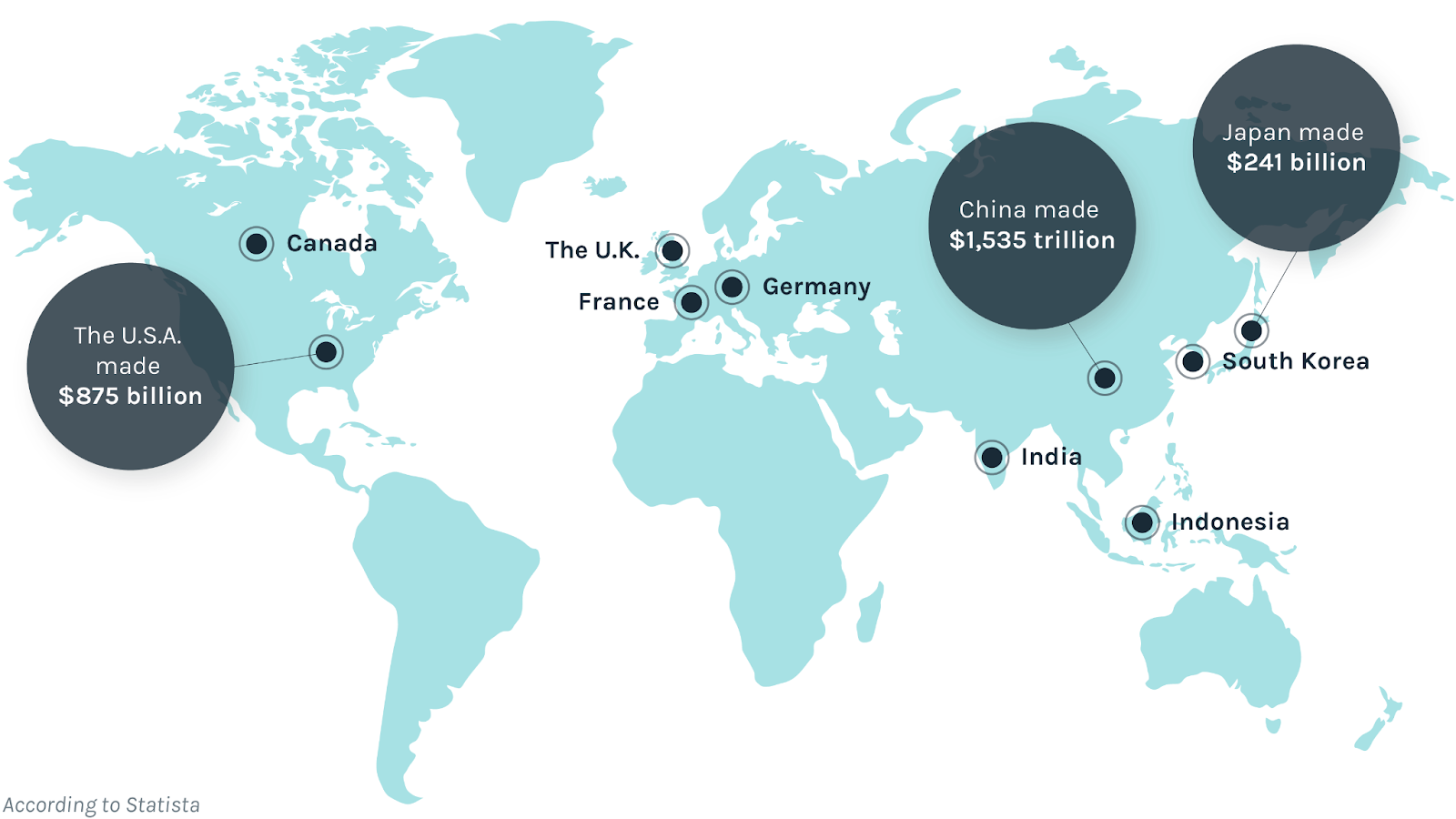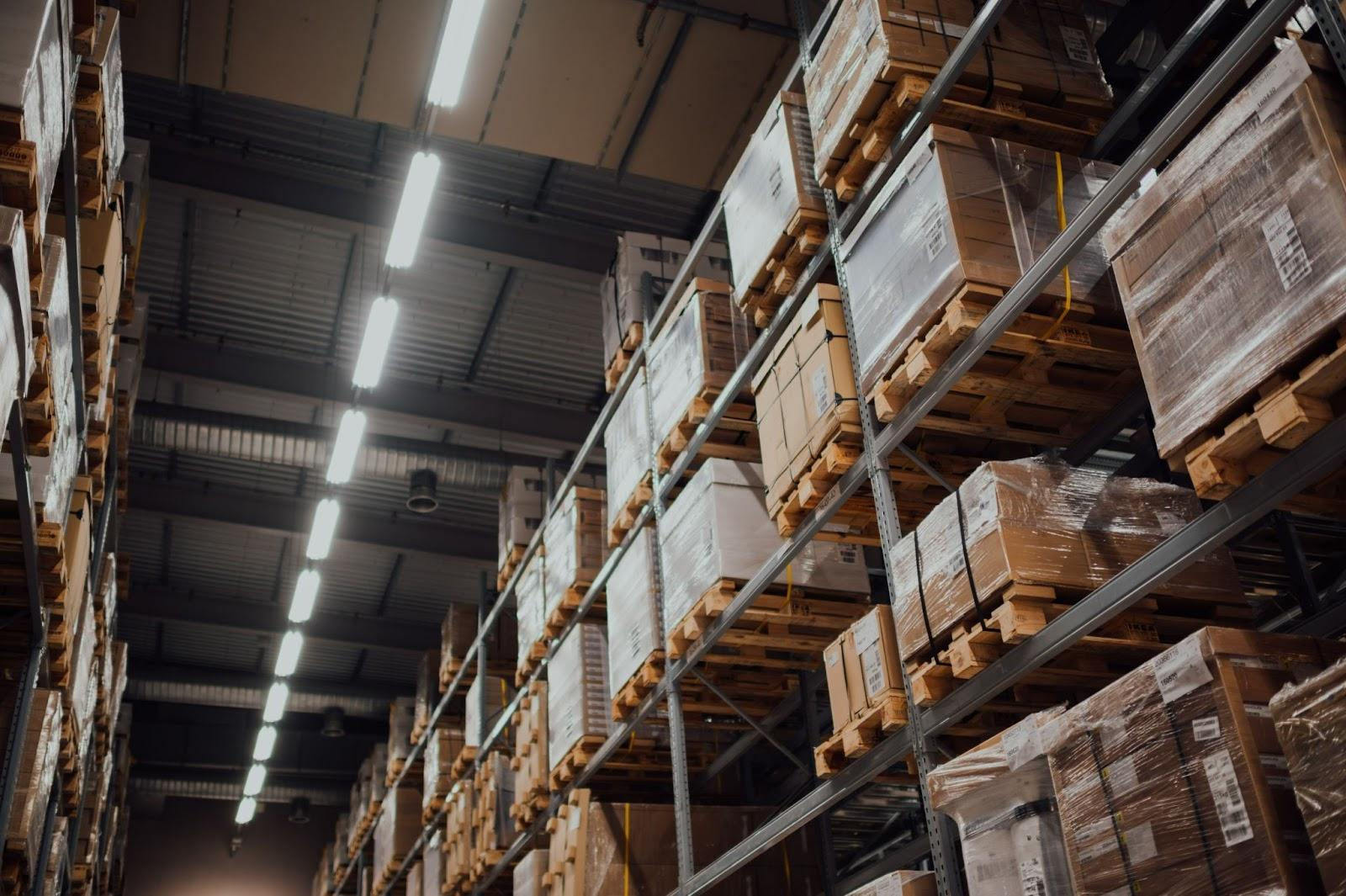Shipping & Logistics Trends for 2023
Global eCommerce Sales Will Increase to Over $6 trillion
Over $5 trillion was made in global eCommerce sales in 2022, and it is expected that sales will reach $6.31 trillion this year. The biggest global online retailer is Alibaba, which was estimated to make $780 billion in 2022. Amazon made around $690 billion, however, it is predicted that they will take first place and overtake Alibaba’s market share before 2027 and reach over $1.2 trillion in online sales.
Top 10 Countries for eCommerce Sales in 2022
China - $1,535 trillion
United States - $875 billion
Japan - $241 billion
Germany - $148 billion
United Kingdom - $143 billion
South Korea - $118 billion
India - $97 billion
France - $96 billion
Indonesia - $59 billion
Canada - $59 billion
6 Global Shipping & Logistics Trends for 2023
1. Sustainable Methods Will Become a Priority
In the last few years, we’ve seen a huge shift from plastic to paper and other sustainable sources. With the impact that non-sustainable methods are having on the environment, it’s no surprise at all that people are coming together to make big changes to reduce their carbon footprint.
Did you know? 52% of online shoppers in the UK and the US want brands to reduce their packaging to be more sustainable.
There have already been many changes made in the shipping industry to ensure that sustainability is a strong focus, such as, reducing packaging materials, and switching to different materials. Another way things have been changing is through an energy switch. A lot of business owners have moved over to using renewable energy sources that reuse and recycle materials to leave a greener footprint.
We predict that this will continue with even more focus, and businesses will be trying harder than ever to ensure they’re lowering their impact on the environment. Not only will being more sustainable be good for the environment, but it will also please your customers and make your business a more trustworthy and reliable choice.
2. 3PL Will Be Used More
As larger companies understand, working with third-party logistics companies (3PL) is key when it comes to shipping, storage, and distribution. However, 3PL is not only great for handling products, but it can also help you to reduce inventory and logistics costs. 3PLs have access to an extensive range of couriers, which means they have the option to choose the most affordable one for each order. As you can imagine, this saves businesses an awful lot of time and money.
There are other benefits to using a 3PL as well, such as leveraging freight buying power, scalability, and access to professional assistance and guidance on how best to fulfill orders.
We predict that 3PL will be used a lot more this year and that businesses will be more considerate when it comes to choosing the right 3PL partner. Using a 3PL partner that is able to deal with last-minute changes and can allow your business to scale up or down is essential to the growth of your business.
However, there can be some issues that arise when it comes to logistics outsourcing and 3PL challenges, so it’s important to be aware of these when considering your 3PL needs.
3. Larger Focus on Return Supply Chain Management
Unfortunately, returns are unavoidable in any business. You can’t please everyone, however, it is good to get feedback on why an item has been returned.
Returns can be a real pain, and no business owner wants to deal with more returns than orders. Customers who wish to return a product want a clear and easy way to do so without contacting the seller to get the information they need. When an order is received, customers should be given clear instructions on how to return the item if they choose to, such as a card that includes the instructions or the purchase confirmation email.
In 2021, over 62% of online customers expected retailers to allow for returns within 30 days of purchase. This shows that the majority of eCommerce users make a purchase expecting that they have at least a month to send any unwanted items back. Due to this, businesses need to ensure that they have a strong return policy in place and a generous returns window, so customers are not disappointed.
This year, we expect a larger focus on return supply chain management to make the process as smooth as possible. Disruptions in global supply chains are always frustrating, but even more so when there are supply chain disruptions involving returns.
4. More Last-mile Delivery Solutions
With more and more customers expecting next-day or same-day delivery, now is the perfect time to start looking at your last-mile delivery solutions. Once a customer has placed an order, they want to receive it as soon as possible and to be updated on the whereabouts of their package with real-time updates. What this means for business owners is that you need to have a strong shipping strategy in place with a quick turnaround. While the typical method of transport is cars, planes, or ships, the future of transportation could mean a less human approach. Electric, self-driving cars or drones may become the future of deliveries.
It is always a good idea to look for a faster alternative. Keep on the lookout for new last-mile delivery solutions or if you’re feeling creative, come up with your own ideas.
5. Planning for New Risk Events
Nobody wants to be unprepared if disaster strikes, especially if you’re a business owner with customers to look after. An unexpected event such as a natural disaster can occur out of the blue, especially if you’re in a high-risk area. Such disasters will put a stop to production and affect shipments going out, so essentially, your business will come to a standstill until things have gone back to normal.
Though it’s hard to predict risk events, it’s easy to prepare for them. The best way to be prepared is to put together a backup plan. You can do this by asking yourself, ‘ if a natural disaster or risk event were to arise, how would it affect my business?’ Usually, the typical supply chain would be affected, and you’d have less coverage of workers and be unable to get things sent in and out. Your backup plan could include storing extra supplies and having an alternative system at the ready.
While disasters may strike, the most important thing you can do as a business owner is to plan ahead, so your business doesn’t have to stop altogether. Of course, we hope that new risk events don’t occur, but at least you can be one step ahead if ever they do.
6. Higher Inventory Reserves
As mentioned above, it is always good to be prepared for any event. Aside from a natural disaster occurring, there may be a sudden switch in trends or new interest in a particular product. If it’s something you offer, you may wake up one morning to find that you have an influx of orders that have cleaned you out. Though trends can normally be predicted, it’s always good to plan for surprises.
This means that businesses may start holding more inventory than usual and keep products stocked up more than ever before. Remember that carrying too much stock without doing your market research can lead to dead stock. Luckily, there are ways to avoid dead stock, so you won’t end up losing valuable warehouse space. Having good inventory management ensures that you know exactly how much stock you're holding and if you have the capacity to increase your limit.



